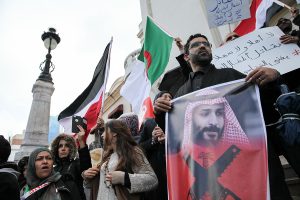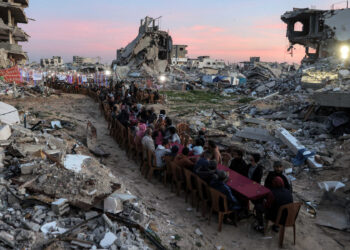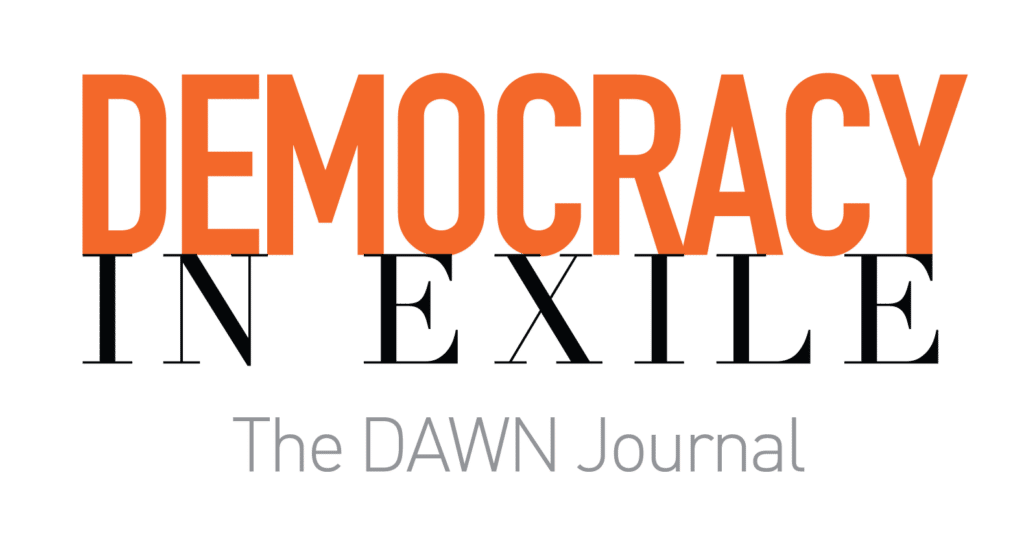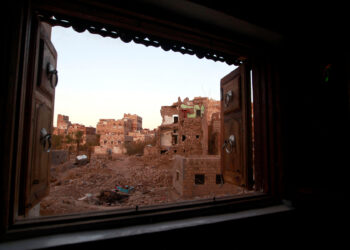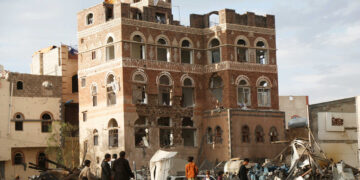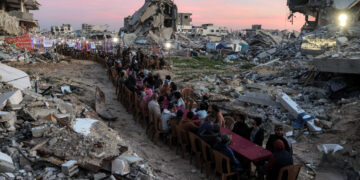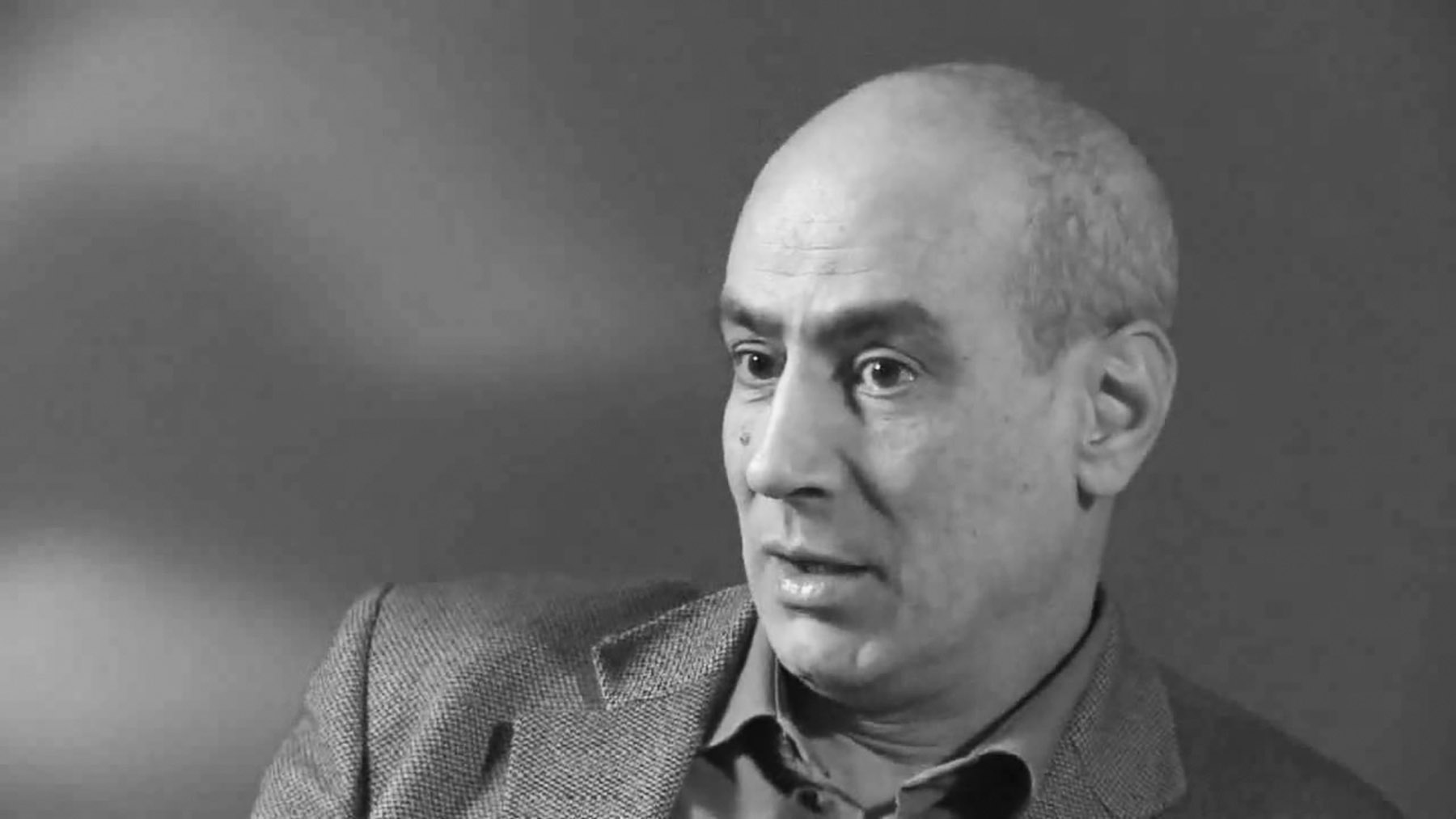Antony Loewenstein is an independent journalist, best-selling author, filmmaker and co-founder of Declassified Australia. He has written for The Guardian, The New York Times, The New York Review of Books and many other outlets. His new book, The Palestine Laboratory: How Israel Exports the Technology of Occupation Around the World, was just published by Verso.
My aim in The Palestine Laboratory is to show how the Israel/Palestine conflict has been exported globally. The tools and technologies Israel uses to repress Palestinians are sold to over 130 nations around the world. Repression and surveillance tech, from spyware to facial recognition tools, are "battle-tested" in Palestine and then marketed to countries across the globe, many of which want to oppress their own unwanted populations, from journalists and human rights workers to dissidents and critics. I wrote this book as both an investigation and warning to remind people that Israel's occupation isn't just brutalizing Palestinians but also finding its way into countless other countries.
*
Editor's note: The following is adapted from The Palestine Laboratory: How Israel Exports the Technology of Occupation Around the World, just published by Verso.
Killing or injuring Palestinians should be as easy as ordering pizza. That was the logic behind an Israeli military-designed app in 2020 that allowed a commander in the field to send details about a target on an electronic device to troops who would then quickly neutralize that Palestinian. The colonel working on the project, Oren Matzliach, told the Israel Defense website that the strike would be "like ordering a book on Amazon or a pizza in a pizzeria using your smartphone."
This kind of dehumanization is the inevitable result of endless occupation. It is also an export asset. What's appealing to growing numbers of regimes globally is learning how Israel gets away with politicide. That term was adapted to Israel/Palestine by the late Israeli scholar and professor of sociology Baruch Kimmerling, who argued in 2003 that Israel's domestic and foreign policy is "largely oriented towards one major goal: the politicide of the Palestinian people. By politicide I mean a process that has, as its ultimate goal, the dissolution of the Palestinian people's existence as a legitimate social, political, and economic entity. This process may also but not necessarily include their partial or complete ethnic cleansing from the territory known as the Land of Israel."
A rare moment of Israeli political honesty came in October 2021 when far-right Israeli parliamentarian Bezalel Smotrich, leader of the Religious Zionist Party and ally of Prime Minister Benjamin Netanyahu, said in the Knesset to the Arab members, "You're only here by mistake, because [founding prime minister David] Ben-Gurion didn't finish the job, didn't throw you out in '48." It was an acknowledgment that ethnic cleansing took place in 1948, albeit delivered by one of the most racist and homophobic Israeli politicians.
It is not a new point of view; in fact, it's been state ideology since 1948. Declassified documents from the Israel State Archives in 2021 revealed that attitudes toward the Palestinians have not changed much since the 1940s. It has been official policy, at least among some of the nation's senior military and political elites, to forcibly expel Arabs to neighboring countries for the entire period of the country's existence. Reuven Aloni, deputy director general of the Israel Lands Administration, said during a 1965 meeting that the ideal goal was "population exchange." He was optimistic "that a day will come, in another ten, fifteen or twenty years, when there will be a situation of a certain kind, with a war or something resembling a war, when the basic solution will be a matter of transferring the Arabs. I think that we should think about this as a final goal."
This kind of dehumanization is the inevitable result of endless occupation. It is also an export asset. What's appealing to growing numbers of regimes globally is learning how Israel gets away with politicide.
- Antony Loewenstein
Yehoshua Verbin, commander of the military government that ruled over Arab citizens between 1948 and 1966, admitted that ethnic cleansing occurred in 1948. "We expelled around half a million Arabs, we burnt homes, we looted their land— from their point of view—we didn't give it back, we took land…" he said. The "solution" offered, then and now, was eerily similar to Kimmerling's thesis; either make the Arabs disappear, and if that was not possible render them unequal in the hope that they might emigrate by choice for a better life elsewhere. Kimmerling could have added that politicide became a market- able tool around the world for nations and officials that wanted to emulate Israeli "success."
In 2002, Israeli military historian Martin van Creveld explained on Australian television what he saw as the dilemma faced by the Jewish state:
They [Israeli soldiers] are very brave people … they are idealists… they want to serve their country and they want to prove them- selves. The problem is that you cannot prove yourself against someone who is much weaker than yourself. They are in a lose- lose situation. If you are strong and fighting the weak, then if you kill your opponent then you are a scoundrel … if you let him kill you, then you are an idiot. So here is a dilemma which others have suffered before us, and for which as far as I can see there is simply no escape. Now the Israeli army has not by any means been the worst of the lot. It has not done what for instance the Americans did in Vietnam … it did not use napalm, it did not kill millions of people. So everything is relative, but by definition, to return to what I said earlier if you are strong and you are fighting the weak, then anything you do is criminal.
Van Creveld was not factually wrong, but he underestimated how appealing the ideology of domination has become after more than seven decades of occupation. Israel's homeland security industry has effectively monetized its tools and strategy, showing with battle-tested examples how a belief in separation, keeping Palestinians and Israelis distant from each other so long as the latter dominated the former, was the solution in the short to medium term. Separatists, argued Kimmerling, wanted "the opposite of ethnic cleansing but it would have a similar practical and psychological outcome. It is rooted in a mixture of intertwined emotions: distrust, fear and a hatred of Arabs, combined with the desire to remove Israel from its immediate cultural milieu."
Separatism is the ascendant ideology in the Israeli mainstream. Prominent Israeli historian Benny Morris told Reuters in 2020 that disappearing Palestinians from view was an ideal solution for Israeli Jews. "Israelis have gone off Palestinians," he said. "They want as little as possible to do with them, want as few of them around as possible and the [separation] fence [between Israel and the West Bank] helps that situation emerge."
Morris blamed that on the Palestinian campaign of suicide bombings during the Second Intifada between 2000 and 2005 in which more than 3,100 Palestinians and 1,038 Israelis were killed, 6,000 Palestinians arrested, and 4,100 Palestinians homes destroyed.

Another way to view separation was an idea pushed by West Bank settler Micah Goodman, who reportedly had the ear of Israeli Prime Minister Naftali Bennett when he assumed power in 2021. Goodman's vision was "shrinking the conflict." He explained to NPR that "most Israelis feel that if we stay in the West Bank, we have no future, and if we leave the West Bank, we have no future. Most Israelis are trapped in this catch." To resolve this conundrum, because the "conflict" with the Palestinians is unlikely to be resolved soon, Goodman said that Israel could "start shrinking it in steps that shrink occupation without shrinking security, which means shrink the amount that Israel controls Palestinians without increasing the amount the Palestinians could threaten Israelis." What this meant in practice was maintaining the status quo.
The most effective example of separatism is the encirclement of Gaza, trapping more than 2 million Palestinians behind high fences, under constant drone surveillance, infrequent missile attack, and largely closed borders enforced by Israel and Egypt. When Israel completed the sixty-five-kilometer high-tech barrier along the entire border with Gaza in late 2021, at a cost of $1.11 billion, a ceremony in southern Israel took place to mark the occasion. Haaretz described the wall as "a complex engineering and technological system: the only one of its kind in the world" that required construction assistance from Europe.
Back in 2002, three years before Israeli Prime Minister Ariel Sharon withdraw nine thousand Jewish settlers from Gaza, Israeli historian Van Creveld predicted the vision: "[The only solution is] building a wall between us and the other side, so tall that even the birds cannot fly over it … so as to avoid any kind of friction for a long, long time in the future … We could formally finish the problem, at least in Gaza, in forty-eight hours, by getting out and building a proper wall. And then of course, if anybody tries to climb over the wall, we kill him."
Gaza is now the perfect laboratory for Israeli ingenuity in domination. It is the ultimate ethnonationalist dream, keeping Palestinians indefinitely imprisoned. The barrier around the territory was first built in 1994 and has undergone a range of upgrades since (though it was destroyed by Palestinians in 2001). Today its population has been placed in a forced experiment of control where the latest technology and techniques are tested. However, what is happening in Gaza is increasingly occurring globally. The Palestinian architect Yara Sharif said that "the Palestinianization of cities is happening worldwide. It's happening by destruction and erasure, but also with dramatic climate change."
The November 2012 Israeli bombardment of Gaza, called Operation Pillar of Defense, was a seven-day war that killed 174 Palestinians and 6 Israelis and injured thousands more. While the death toll in that operation was relatively low, Israel's Operation Cast Lead in 2008 and early 2009 saw the death of 1,400 Gazans. That conflict saw a revolution in how the IDF portrayed the war across its multiple social media platforms. Worried that public opinion in some Western nations was turning against Israeli military actions, the so-called instawar was a coordinated enterprise to live-tweet military operations and infographics, produced to proudly announce the killing of Hamas members or the arrest of Palestinian "terrorists." These productions sometimes had the feel of a Hollywood-style, big- budget action film.
The Israeli social media strategy aimed to involve both domestic and global supporters of its military missions. By doing so, and asking backers to post their own supporting tweets, Facebook posts, or Instagram images, the IDF created a collective mission that other nations could easily mimic by stirring up nationalist fervor online. During Operation Pillar of Defense, the IDF encouraged supporters of Israel to both proudly share when "terrorists" were killed while at the same time reminding a global audience that the Jewish state was a victim. It was a form of mass conscription to the cause through the weaponization of social media.
This was war as spectacle, and the IDF was spending big to make it happen. The IDF media budget allowed at least officers and 2,000 soldiers to design, process, and disseminate official Israeli propaganda, and almost every social media platform was flooded with IDF content.
Today, the IDF Instagram page regularly features pro-gay and pro-feminist messaging alongside its hard-line militaristic iconography. On October 1, 2021, the IDF posted across its social media platforms a photo of its headquarters swathed in pink light with this message: "For those who are fighting, for those who have passed, and for those who have survived, the IDF HQ is lit up pink this #BreastCancerAwarenessMonth." Palestinian American activist Yousef Munayyer responded on Twitter: "An untold number of women in Gaza suffer from breast cancer and are routinely denied adequate treatment and timely lifesaving care because this military operates a brutal siege against over 2 million souls." On Instagram, however, most of the comments below the post praised the IDF.
Gaza is now the perfect laboratory for Israeli ingenuity in domination. It is the ultimate ethnonationalist dream, keeping Palestinians indefinitely imprisoned.
- Antony Loewenstein
This kind of IDF information war strategy is now routinely copied by the U.S. military. The CIA launched a social media campaign, Humans of CIA, in 2021 that aimed to recruit from more diverse communities into its ranks. It felt deeply inspired by the IDF's woke posturing. One of the most discussed (and mocked) campaigns, considering the CIA's role in destabilizing and overthrowing governments since World War II, was the video of a Latina intelligence officer declaring: "I am a cisgender millennial, who has been diagnosed with generalized anxiety disorder. I am intersectional, but my existence is not a box- checking exercise. I used to struggle with imposter syndrome, but at 36 I refuse to internalize misguided patriarchal ideas of what a woman can or should be."
Israel's social media strategy is a sophisticated attempt to link the Jewish state's operations with Western values, or at least those policies supporting a militarized response to terrorism (or resistance, depending on your perspective), hoping to engender it to global audiences. "Social media is a warzone for us here in Israel," said Lt. Col. (Ret.) Avital Leibovich, creator of the IDF social media unit and director of the American Jewish Commit- tee in Israel, during 2014's Operation Protective Edge. It was a seven-week battle between Israel and Hamas that killed more than 2,250 Palestinians, many of them civilians, including 500 children, and 70 Israelis, most of whom were soldiers.
The unstated goal of the IDF information strategy is weaponizing Jewish trauma in the service of perpetuating occupation. Through countless posts and memes, the IDF believes that high- lighting the sacrifices made by Israel in its never-ending battles with the Palestinians is a winning way. In this logic, Palestinians have no right to be angry about their plight and their trauma is nonexistent. Resisting the occupation is thus rendered illegitimate. This messaging ideology appeals to other nations, most of whom cannot match Israel in speed and sophistication, in their own wars with insurgents or domestic opponents. The tactic is always the same: a negative response to a badly received tweet or Facebook post is simply more posts and tweets, aiming to flood the internet with so much noise that the previous posts are quickly forgotten.
A comprehensive 2021 study of Operation Protective Edge's social media campaign by Marisa Tramontano, a sociologist at John Jay College of Criminal Justice, found that the IDF used a multitude of visual and written tools to justify its actions in Gaza and the West Bank. "Israel establishes itself, in part through its unmediated social media discourse, as part of the Islamophobic hegemonic coalition that positions Israel as the eastern-most front of the United States' 'global war on terrorism,'" Tramontano wrote.
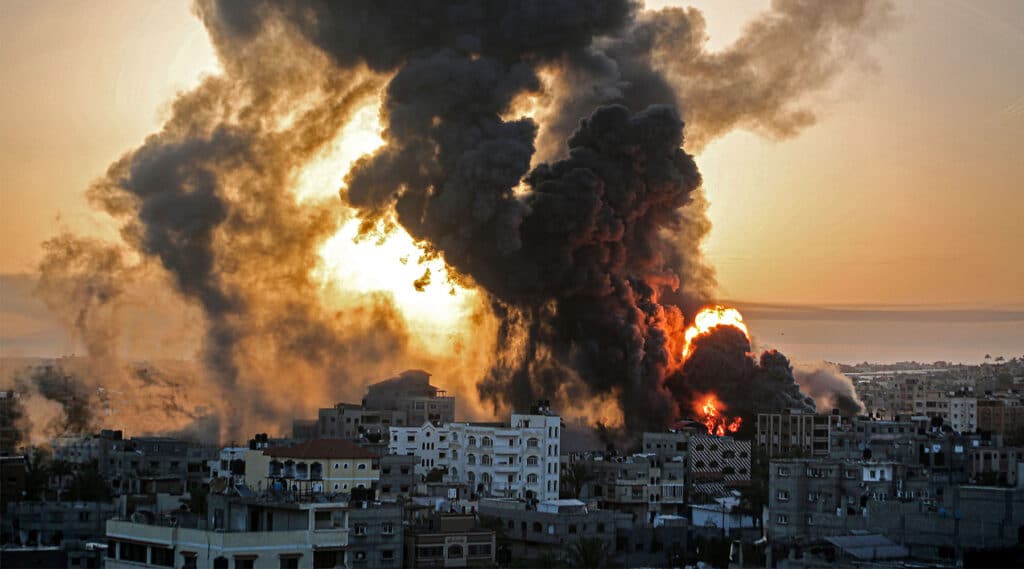
There was hope at the birth of the digital revolution that being able to film and disseminate photos and videos of Israeli abuses in Palestine might help the Palestinian cause. There is no doubt that global awareness of the occupation has soared, and that this has been partly assisted by the raw, unedited vision of Palestinians interacting with settlers or the Israeli army. Yet there is also a large body of evidence that hard, visual imagery has been co-opted by the Israeli state to deny the reality of what Palestinians say they are experiencing. The Israelis claim that Palestinians are lying about their circumstances despite what we're all seeing. Being able to see Israeli atrocities against Palestinians doesn't work with people who do not view Palestinians as human beings, a racial group who deserve punishment and death. As the Israeli population has moved to the right, moral discomfort is rare.
Israel's social media warriors know that connecting its mission to Washington's post-9/11 struggles is vital to eliciting sympathy and support. "The so-called threat of Palestinian terror constitutes a key component of Israeli trauma narratives—a quotidian threat layered on top of multigenerational trauma over exile and genocide," Tramontano argued:
More concretely, Israel's actions are presented as moral and legal, and the state's current plight is explained in light of Israel's tragic past. Images of New York City burning then directly connect Israel's military operations to the American military response to the "trauma" of 9/11. Conversely, Hamas is cast as a barbarous and irrational enemy with no legitimate claims to trauma, much like narrations about al Qaeda, the self-declared Islamic State, and the like.
The IDF introduced new weapons and paraded them in front of different defense media outlets during the 2014 Gaza war. The technology was profiled, though advertised would be a more accurate term, in Israeli and international media and included bombs, tank shells, and the Elbit Hermes drone. A few weeks after the war ended, the annual Israel Unmanned Systems conference, an event hosted with the U.S. Embassy in Tel Aviv to prospective markets in Asia, Europe, and North and South America, featured some of the weapons used in the Gaza conflict, including the Elbit drone.
The next Israeli experiment was tested in real time during the Great March of Return, when Gazans protested alongside the fence with Israel. Starting in March 2018, it gained massive global attention as Palestinians peacefully demanded an end to the siege on Gaza and the right to return to lands stolen by Israel. Between March 2018 and December 2019, 223 Palestinians were killed, most of whom were civilians, and eight thousand were shot by snipers, some left with life-changing injuries. The IDF tweeted (but then deleted) on March 31: "Yesterday we saw 30,000 people; we arrived prepared and with precise reinforcements. Nothing was carried out uncontrolled; every- thing was accurate and measured, and we know where every bullet landed."
Israel was so confident in its actions, without fear of the International Criminal Court or any domestic sanction, that Brigadier-General (Reserve) Zvika Fogel gave an interview on Israeli radio in April 2018. Fogel was a former chief of staff at Israel's Southern Command, which included Gaza. After Israeli snipers caused the death and injury of thousands of Palestinians, including children, radio host Ron Nesiel questioned Fogel and asked if the IDF should "rethink its use of snipers." Fogel said the use of snipers was appropriate: "If this child or anyone else gets close to the fence in order to hide an explosive device or check if there are any dead zones there or to cut the fence so someone could infiltrate the territory of the State of Israel to kill us …"
"Then his punishment is death?" Nesiel asked.
"His punishment is death," the general argued. "As far as I'm concerned then yes, if you can only shoot him to stop him, in the leg or arm—great. But if it's more than that then, yes, you want to check with me whose blood is thicker, ours or theirs."









